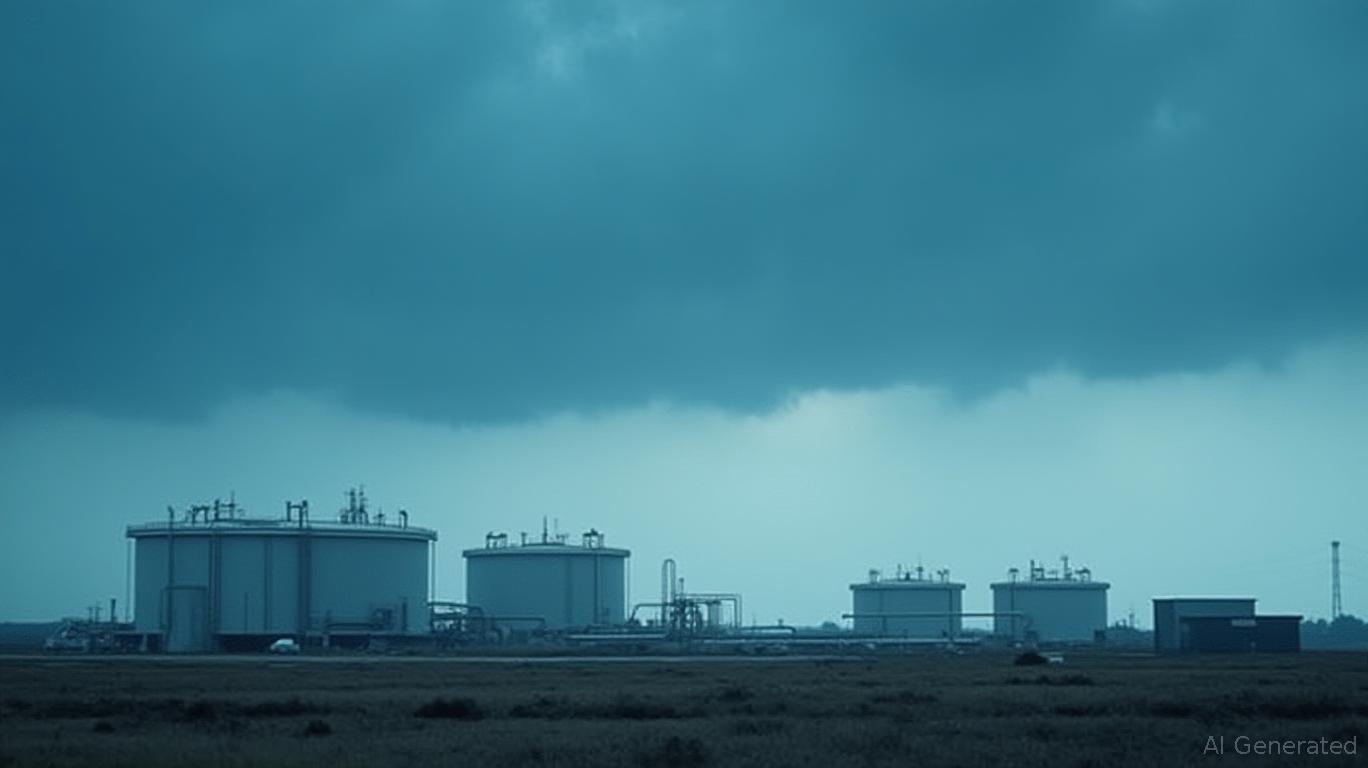Natural Gas Prices Surge as Weather and Inventories Collide: A Trader's Playbook for Summer 2025
The natural gas market is entering a pivotal season, with weather-driven demand surges and inventory dynamics shaping prices in a way not seen since the early 2020s. As of June 2025, U.S. natural gas inventories stood at 2,600 billion cubic feet (Bcf), 4.7% above the five-year average but 10% below year-ago levels. This gap, amplified by record production and operational challenges, is creating a volatile backdrop for traders and investors.
Ask Aime: Predicting Natural Gas Trends for Retail Investors

The Weather Factor: Demand on Overdrive
The National Oceanic and Atmospheric Administration (NOAA) forecasts above-normal temperatures for most of the U.S. through mid-June, with a 60% chance of an active hurricane season. This spells trouble for storage refill efforts. Warmer weather boosts cooling demand, which typically accounts for 20% of natural gas consumption during peak summer months.
Ask Aime: What's the outlook for natural gas prices in June?
Historically, low inventory levels ahead of summer correlate with sharp price spikes. For instance, in 2021, a 15% year-over-year deficit in May led to a 35% surge in Henry Hub futures by August. Today's 10% deficit, combined with NOAA's outlook, suggests similar volatility. Traders should brace for potential price spikes if storage injections fail to offset demand growth.
Regional Disparities and Inventory Tightness
While national inventories are above the five-year average, regional imbalances are stark. The Mountain region's 35% surplus contrasts sharply with the Midwest's 15.4% year-over-year deficit. Pipeline constraints and regional demand patterns are exacerbating these gaps. For example, the Midwest's reliance on natural gas for power generation—coupled with declining production in key basins—has left it vulnerable to price spikes.
Meanwhile, LNG exports remain a wildcard. Despite a 21.5% decline in feedgas volumes since April due to maintenance at Sabine Pass and Freeport LNG, year-over-year exports remain 3.1% higher. A rapid recovery in LNG activity could further drain storage reserves, tightening supply.
The EIA's Bearish Outlook
The EIA's Short-Term Energy Outlook (STEO) projects storage levels to end the injection season (October 31) at 3,670 Bcf—a 3% deficit relative to the five-year average. This forecast assumes production stays near record highs (105.8 Bcf/d in May 2025), but it underestimates the impact of a hurricane season that could disrupt Gulf Coast production.
Region |
|---|
| China |
| United States |
Name |
|---|
| Gulf ResourcesGURE |
| Cheniere EnergyLNG |
Investors should monitor NOAA's hurricane updates closely. A single storm shutting in 5% of Gulf production (as happened in 2023) could add $1–$2/MMBtu to Henry Hub prices.
Investment Play: Long Natural Gas, Short Volatility
The data points to a bullish bias for natural gas prices through October. Traders have several options:
1. Long futures contracts: Positioning in Henry Hub futures (NG) for delivery in July–September offers direct exposure to seasonal demand.
2. Natural gas ETFs: The United States Natural Gas Fund (UNG) tracks front-month futures, though contango risks require active rollover management.
3. Options strategies: Buying call options on UNG or futures contracts provides leverage while capping downside risk.
4. LNG exporters: Companies like Cheniere Energy (LNG) stand to benefit from higher export prices if global demand (especially in Asia) remains robust.
Risks to Consider
- Production overhang: Record U.S. output could outpace demand if the summer proves milder than expected.
- Storage surprises: The May software glitch that inflated EIA data shows how errors can amplify volatility.
- Policy shifts: Proposed regulations on methane emissions could disrupt drilling activity in key basins.
Conclusion: A Summer of Fire and Ice
Natural gas investors face a market primed for extremes. Weather-driven demand surges, regional inventory tightness, and the looming hurricane season are setting the stage for a volatile summer. While long positions in natural gas assets carry upside, traders must remain nimble—hedging with options or short-term futures—to navigate the inevitable swings. As the old adage goes: “In natural gas, the only certainty is uncertainty.”
Nick Timiraos

Comments
No comments yet